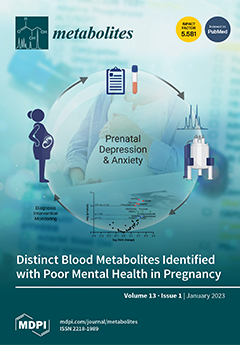Due to its rising antibiotic resistance and associated inflammations,
Helicobacter pylori poses a challenge in modern medicine.
Salvia officinalis, a member of the Lamiaceae family, is a promising medicinal herb. In this regard, a phytochemical screening followed by GC-MS and LC-MS was
[...] Read more.
Due to its rising antibiotic resistance and associated inflammations,
Helicobacter pylori poses a challenge in modern medicine.
Salvia officinalis, a member of the Lamiaceae family, is a promising medicinal herb. In this regard, a phytochemical screening followed by GC-MS and LC-MS was done to evaluate the chemical profile of the total ethanolic extract (TES) and the essential oil, respectively. The anti-
H. pylori and the anti-inflammatory activities were evaluated by a micro-well dilution technique and COX-2 inhibition assay. Potential anti-
H. pylori inhibitors were determined by an in silico study. The results revealed that the main metabolites were flavonoids, sterols, volatile oil, saponins, and carbohydrates. The LC-MS negative ionization mode demonstrated 12 compounds, while GC-MS showed 21 compounds. Carnosic acid (37.66%), epirosmanol (20.65%), carnosol1 (3.3%), and 12-
O-methyl carnosol (6.15%) were predominated, while eucalyptol (50.04%) and camphor (17.75%) were dominant in LC-MS and GC-MS, respectively. TES exhibited the strongest anti-
H. pylori activity (3.9 µg/mL) asymptotic to clarithromycin (0.43 µg/mL), followed by the oil (15.63 µg/mL). Carnosic acid has the best-fitting energy to inhibit
H. pylori (−46.6769 Kcal/mol). TES showed the highest reduction in Cox-2 expression approaching celecoxib with IC
50 = 1.7 ± 0.27 µg/mL, followed by the oil with IC
50 = 5.3 ± 0.62 µg/mL. Our findings suggest that
S. officinalis metabolites with anti-inflammatory capabilities could be useful in
H. pylori management. Further in vivo studies are required to evaluate and assess its promising activity.
Full article






